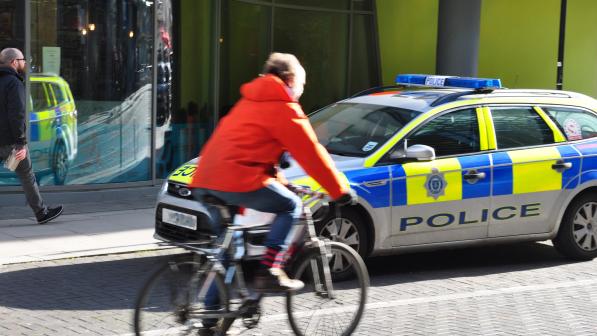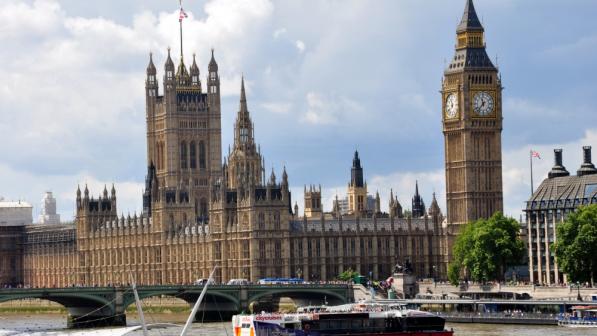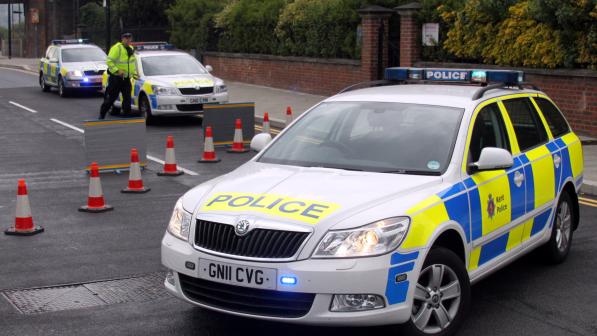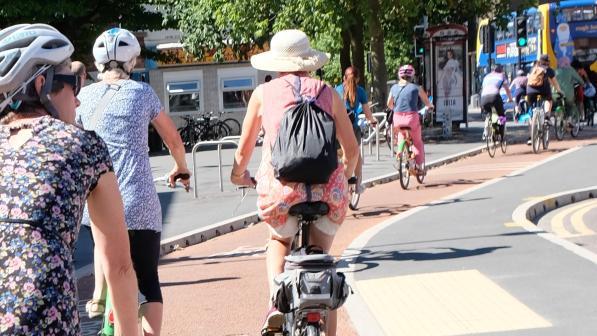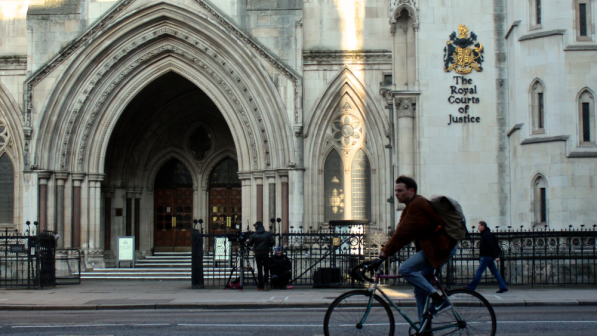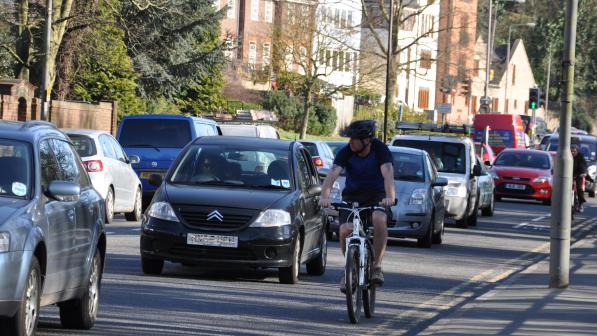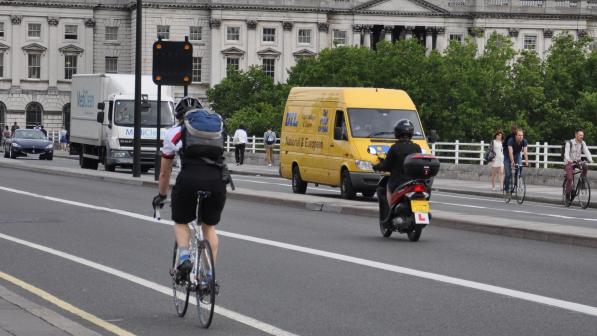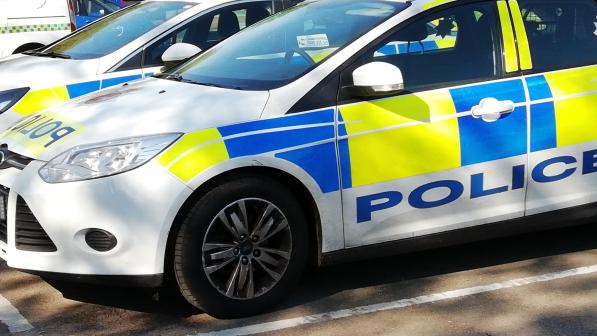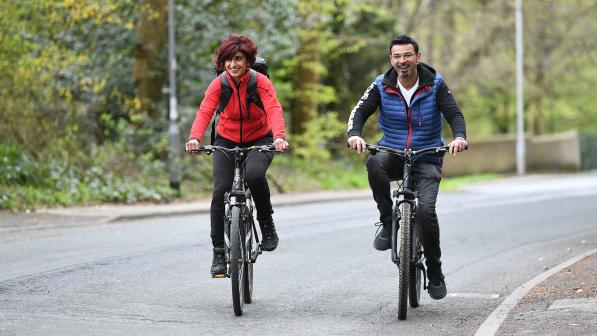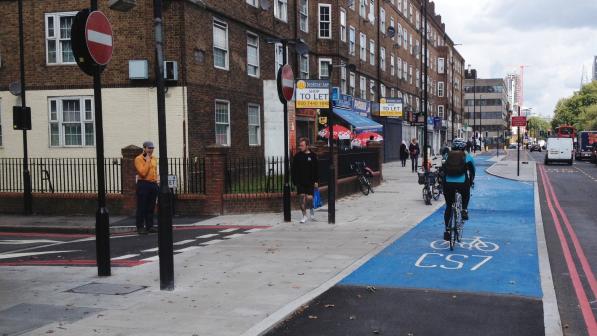Why should more drivers who cause danger be banned?

For some time, Cycling UK has both lobbied and campaigned for the more frequent use of driving disqualifications for longer periods. We believe that the need to protect the public should always come before the perceived inconvenience caused by a driving ban.
As such, the focus on disqualification should not be limited to fatal cases; rather, minimum disqualification periods should also be considered for other, more common offences and repeat offenders.
Before detailing the statistics showing the declining use of driving disqualifications, it is helpful to set the context with the case of cyclist Lee Martin. This clearly demonstrates why minimum disqualifications for repeat offenders, the totting up system, and the ‘exceptional hardship’ loophole (which allows offenders to avoid a totting up disqualification), must be reviewed.
Lee Martin
Lee Martin was killed in July 2015 by Christopher Gard, who drove into him while texting at the wheel of his van. Gard was convicted of causing Lee’s death by dangerous driving.
Tragically, six weeks before his collision with Lee, Gard appeared in a local magistrates’ court facing a totting up disqualification. He had six previous convictions for driving whilst using his mobile phone, and had also escaped prosecution twice for the same offence by attending a driver re-training course in lieu. He again managed to avoid a disqualification by pleading ‘exceptional hardship’, citing the consequences for his family if he could not drive.
Gard should have been disqualified before he went on to cause Lee’s death. Having been caught driving irresponsibly eight times, he should not have been given a ninth chance before permission to drive was suspended. Lee’s brother Darrell is a supporter of Cycling UK’s ‘Cycle safety: make it simple’ recommendations.
Why wouldn’t you change a system that allows people convicted of dangerous driving to get back on the road before it’s proven that they’re safe to drive?
Darrell Martin, brother of Lee Martin.
Statistics
To highlight the declining use of disqualification powers:
- GB licensing data show that, as of March 2018, 10,664 drivers were still able to drive even though they had more than 12 points on their driving licence. (Note: some might have served their sentences, or not appeared before the court to be disqualified).
- Nevertheless, every year since 2015, the number of people still able to drive with more than 12 points on their licence has increased, and we have good reason to believe that a large proportion of them avoid a totting up disqualification by successfully pleading ‘exceptional hardship’.
- In England and Wales (E&W), Ministry of Justice (MoJ) figures indicate that the number of drivers disqualified by the courts for a motoring offence fell from 134,817 in 2007 to just 58,099 in 2017, a drop of 57%.[1]
- According to a briefing from the road crash victims’ charity RoadPeace, for offences where bans are supposedly obligatory, the number of people escaping disqualification has more than doubled from 3% to 7% (2005 – 2015, E&W). Where bans are discretionary (as with most endorseable offences), the proportion receiving a ban has declined from almost 13% to less than 3%.
- In 2017 (E&W), 93.5% of drivers sentenced for killing another road user were disqualified, compared to 98.1% in 2005.[2]
These statistics exemplify the declining use of disqualifications for all motoring offences, shorter periods for them, and an increase in drivers avoiding disqualification by arguing special reasons or ‘exceptional hardship’. In Cycling UK’s view, this increasing reluctance to remove licences from those who endanger others means we need a comprehensive review of the laws on driving disqualification, primarily to consider whether road safety would be improved by:
- Re-drafting the existing legislation that permits drivers to argue ‘exceptional hardship’ to retain their driving licence and avoid a disqualification. One option would be to remove the exceptional hardship ‘defence’ completely. Another would be to more tightly define its remit. The predictable inconvenience consequent upon losing your licence should not justify a repeat motoring offender avoiding a disqualification. This is exactly what happened in the Christopher Gard case.
- A similar re-drafting of the legislation which permits ‘special reasons’ to be advanced to avoid supposedly obligatory disqualification. A ‘special reasons’ defence was meant to be exceptional, and never intended to be a mechanism to allow over 7% of drivers facing obligatory bans for serious offences to avoid disqualification.
- The introduction of further obligatory disqualification periods for other bad driving offences (speeding at over twice the speed limit, for example, or a second careless driving offence within a five-year period).
- Longer minimum bans for those offences subject to existing obligatory bans.
- Extending the requirements for drivers to be ordered to undertake an extended re-test before recovering their licence following a disqualification. Currently, the courts require only a very small proportion of the drivers they ban directly to take an extended test before they can recover their licence (8% in 2017, E&W – 4,839 out of 58,099).[3]
- Introducing driver re-training as a sentencing option, to allow courts to order drivers to undertake a re-training course as part of the sentencing package (currently driver re-training courses are merely an alternative to prosecution offered by the police, not a sentencing option).
The need for change
The fundamental priority for disqualification powers, and the use of disqualification as a sentencing option, must be to give a legislative signal that driving is not an entitlement, but merely a revocable privilege; and that the licence to do so should be removed for public protection where driving falls below the required standard.
The contrast between the way the courts deal with banning offenders in driving cases and those in animal neglect cases demonstrates how illogical their current approach is: someone who fails to seek medical attention for their pets is likely to face a lengthy animal ownership disqualification order on conviction for neglect; but someone who endangers other road users through neglect is far less likely to be banned from driving. Animal welfare trumps the pet owner’s desire to own a pet, whereas the need to drive seems to trump road safety and public protection.
It is crucially important that our key recommendation for a review of road traffic offences and penalties generally, and this specific recommendation regarding disqualification powers, are not simply passed over by the Department for Transport (DfT) for consideration solely by the MoJ. After all, road safety falls within the DfT’s remit, and the perception of safety is important if the ambition to increase active travel is to be fulfilled.
If irresponsible drivers do not get the message that they will very probably be banned for texting at the wheel or repeat speeding offences, they are less likely to change their behaviour. If other road users, particularly cyclists and pedestrians, see drivers breaking the rules without apparent consequences, they are less likely to feel safe sharing the roads with them, and more likely to perceive active travel as unsafe.
In summary, effective laws are inextricably linked to road safety, and the laws on driving disqualification are ineffective.
- The above recommendation was one of over 80 we made in our 'Cycle safety: make it simple' response to the Department for Transport's Cycle Safety Review (June 2018).
[1] MoJ Criminal Justice Statistics Quarterly Dec 2017. Published May 2018. Overview Tables A.6.5A
[2] Ibid. Calculated from Overview Tables A.6.3A and A6.5A
[3] Ibid. Overview Table A.6.6A.

